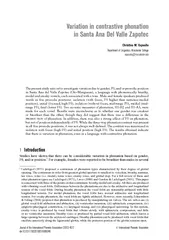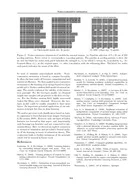PDF-Variation in contrastive phonation in Santa Ana Del Va
Author : liane-varnes | Published Date : 2015-05-22
Esposito Department of Linguistics Macalester College espositomacalesteredu The present study sets out to investigate variation due to gender F0 andor prosodic position
Presentation Embed Code
Download Presentation
Download Presentation The PPT/PDF document "Variation in contrastive phonation in Sa..." is the property of its rightful owner. Permission is granted to download and print the materials on this website for personal, non-commercial use only, and to display it on your personal computer provided you do not modify the materials and that you retain all copyright notices contained in the materials. By downloading content from our website, you accept the terms of this agreement.
Variation in contrastive phonation in Santa Ana Del Va: Transcript
Download Rules Of Document
"Variation in contrastive phonation in Santa Ana Del Va"The content belongs to its owner. You may download and print it for personal use, without modification, and keep all copyright notices. By downloading, you agree to these terms.
Related Documents














